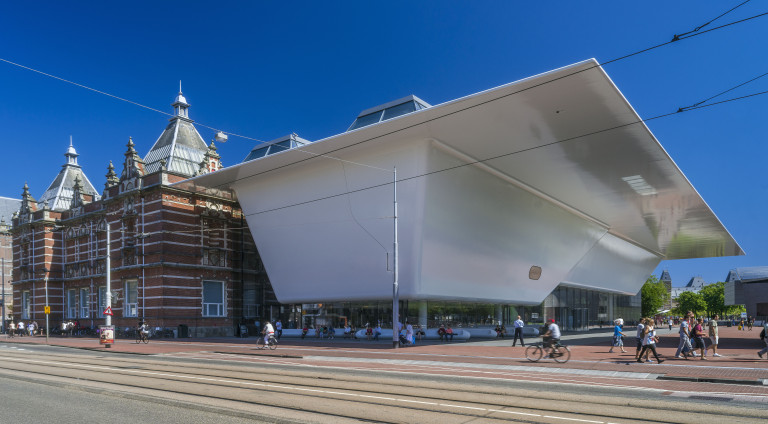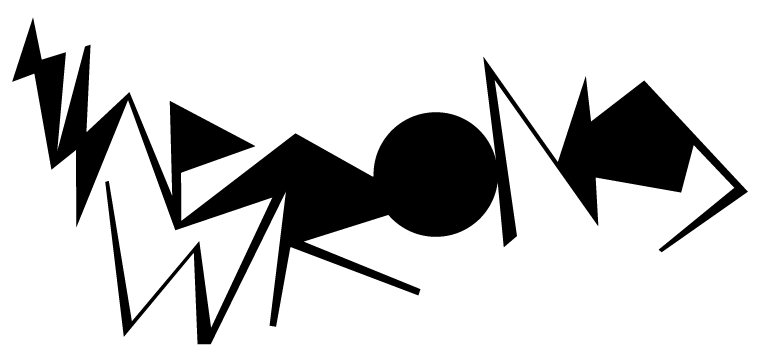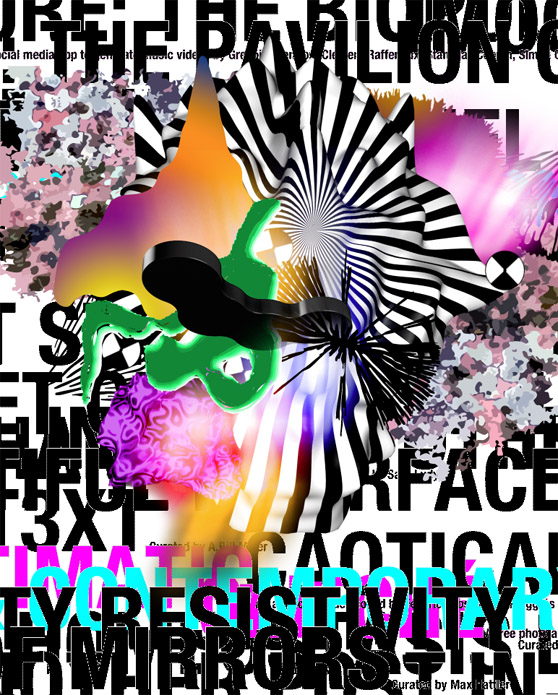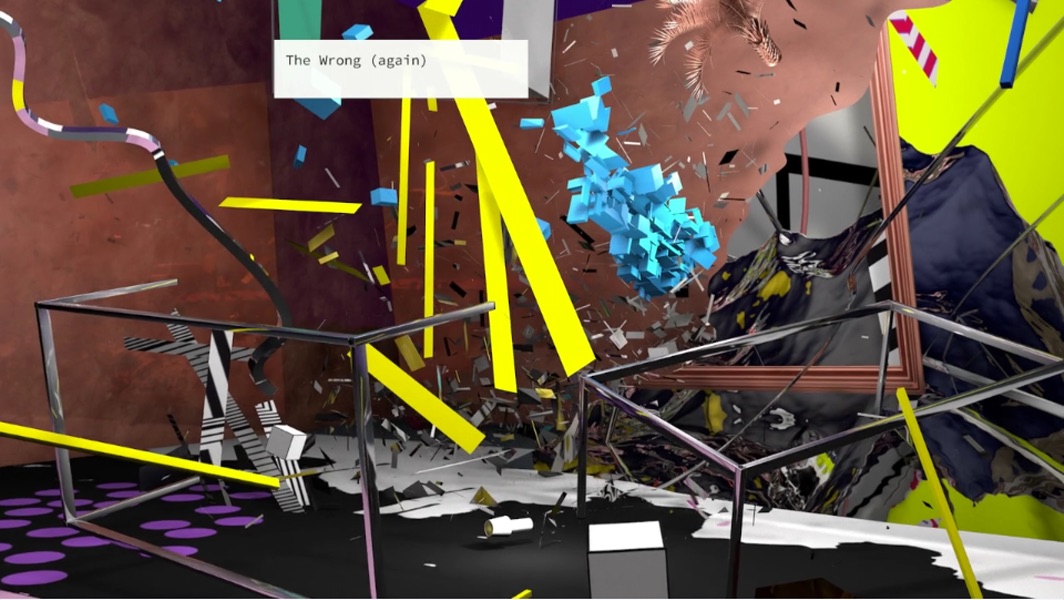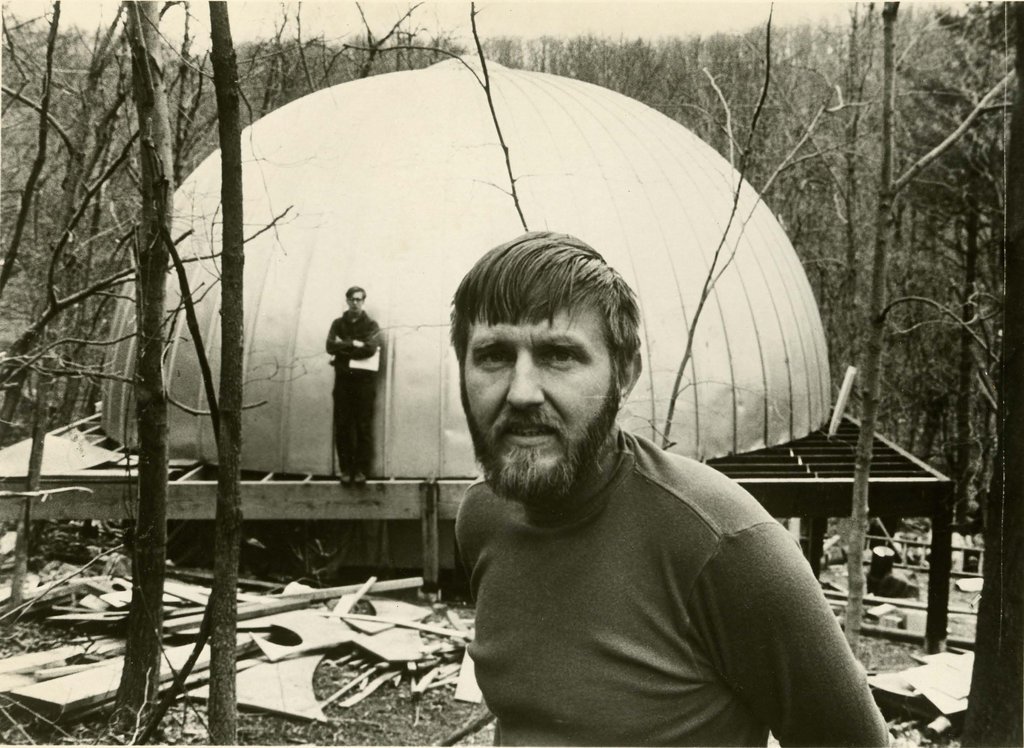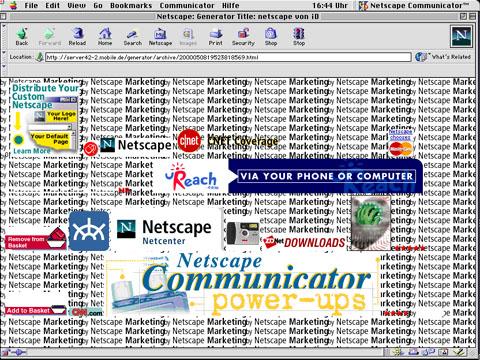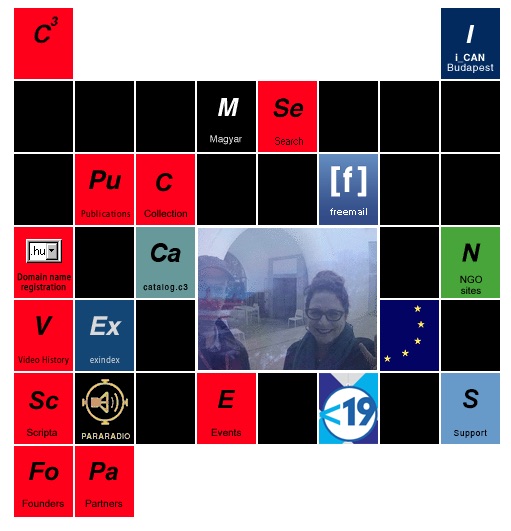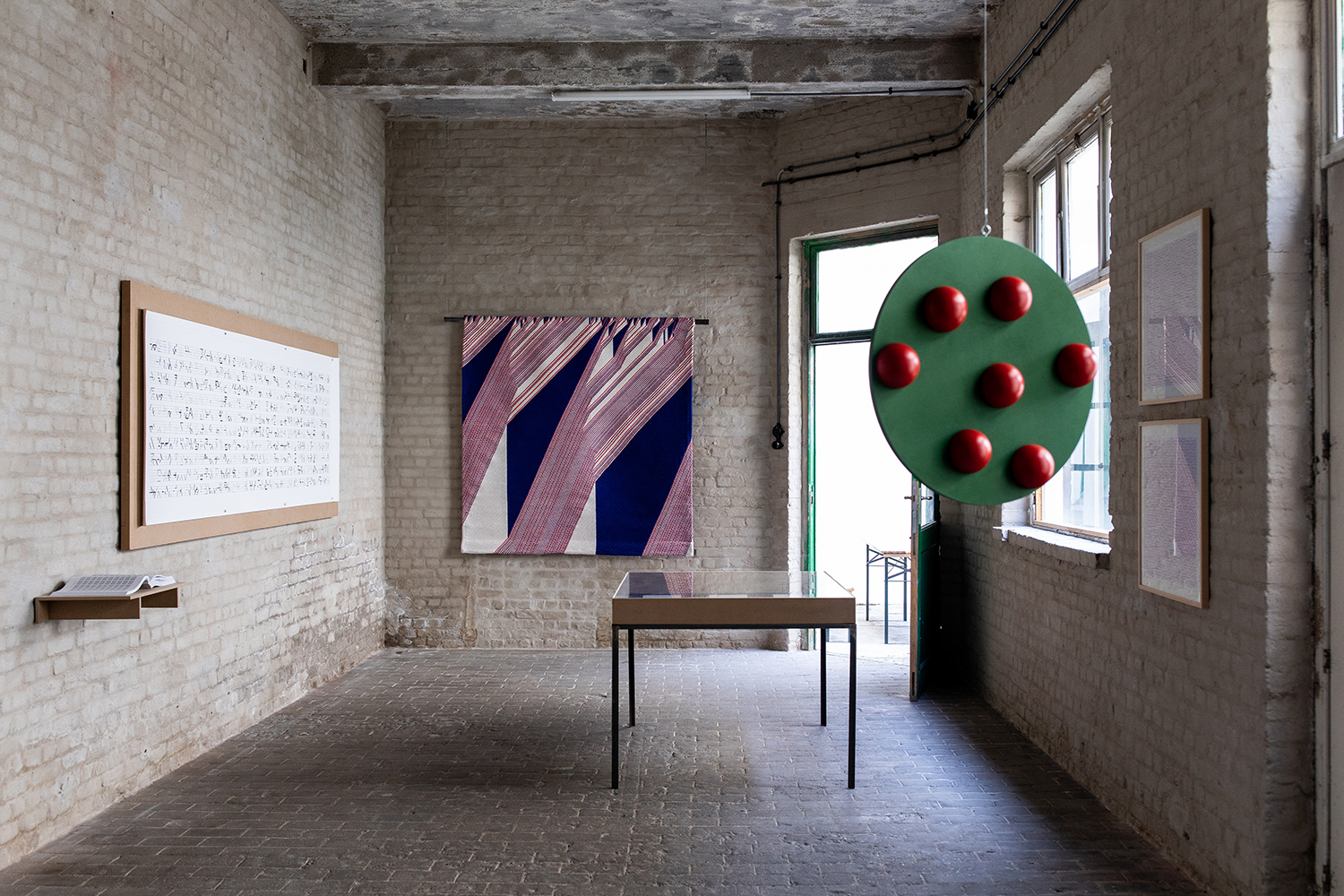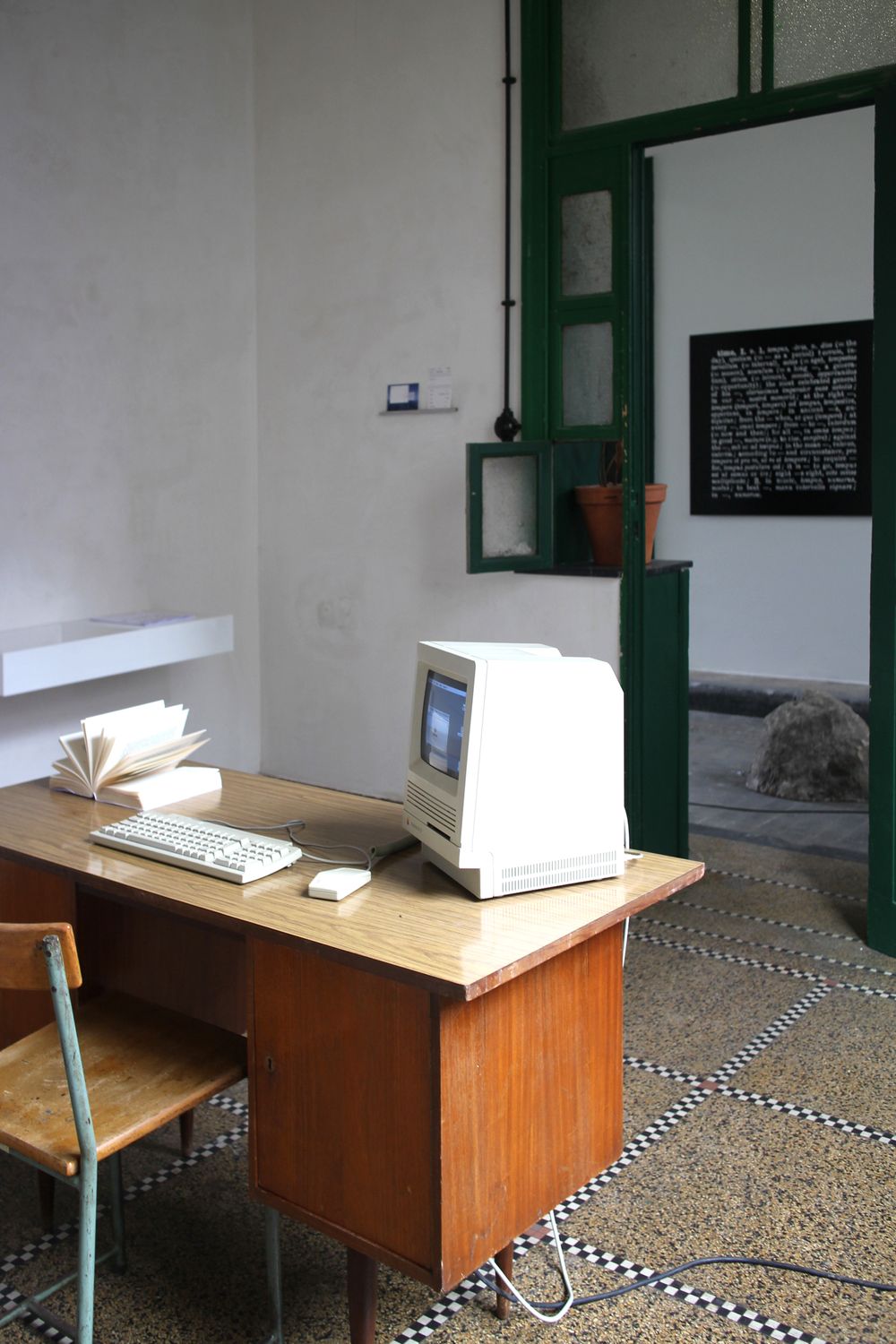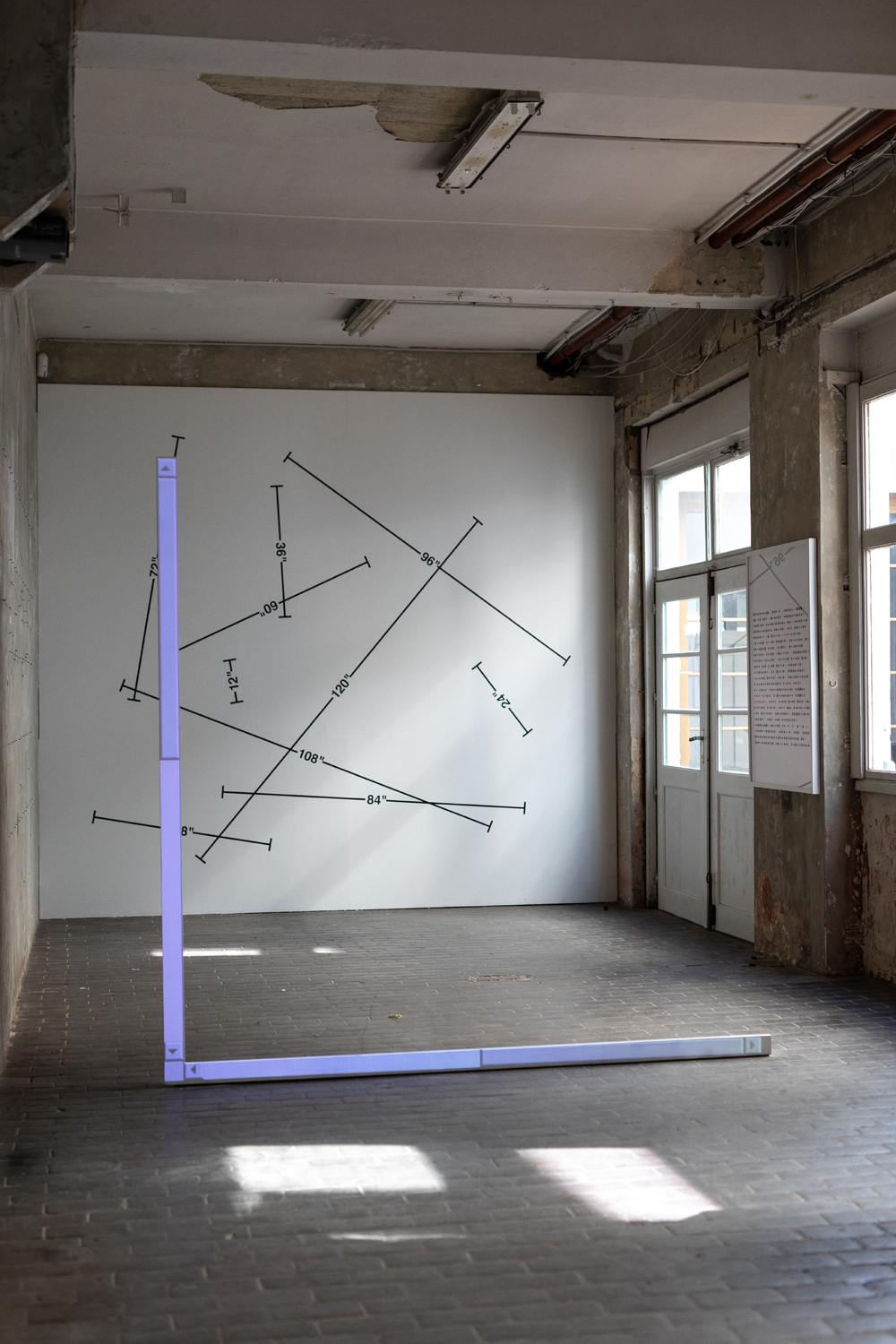foundyou.online is a directory for new media art. You can browse the index of organizations, and events/festivals. You can also search by location, and sort by tag or decade.
From https://thewrong.org/about:
the wrong was born in 2o13 as a collaborative effort to create and promote digital art & culture, launching a global art biennale open to participation, happening both online & offline
“counting its viewership in the millions, the wrong just might be the world’s largest art biennale — the digital world’s answer to venice” - the new york times
since 2o13, more than 55oo artists and curators have officially participated in the wrong biennale
in march 2o2o, following the end of the 4th edition & in the midst of the covid19 pandemic outbreak
the wrong announces its next biennale editions for november 1st, 2o21, november 1st, 2o23 and november 1st, 2o25
and adds two complementary strains:
the wrong website new daily feed of contemporary digital art & culture links
the wrong tv new online tv platform for digital art, music & culture. 24/7 free live streaming
in april 2o2o, aware of the unavoidable digital migration of degree shows for the upcoming 2o2o class of art students around the world, the wrong introduces
the wrong degree show an annual online exhibition, open to participation, to showcase degree shows by graduating art students of schools and universities around the world
The Link Art Center is a curatorial platform promoting contemporary artistic research and critical reflections on the core issues of the information age: it organizes events, publishes books, collaborates and networks with individuals, groups, companies, institutions on a local and international level.[1]
Founded on March 9, 2011 as “Link Center for the Arts of Information Age” by Fabio Paris, Lucio Chiappa and Domenico Quaranta, joined by Matteo Cremonesi in 2014, the Link Art Center acted as a curatorial platform focused on the promotion of contemporary artistic research and critical reflections on the core issues of the information age, through the organization of events, editorial activity, collaboration and networking with individuals, groups, companies and institutions on a local and international level.[2]
Link Cabinet was a single web page hosting solo shows where artists exhibited a single, site-specific artwork. A project by Matteo Cremonesi for the Link Art Center (2014 - 2019) [3]
A publishing initiative of the Link Art Center, Link Editions uses the print on demand (POD) approach, which allows to reduce production costs and environmental impact of publishing to the minimum, and to circulate editorial products online. Edited by Domenico Quaranta, from 2011 to 2018 Link Editions published fifty books.[1]
Link Editions is a publishing initiative of the LINK Center for the Arts of the Information Age. LINK Editions uses the print on demand approach to create an accessible, dynamic series of essays, pamphlets, catalogues and artist books. A keen advocate of the idea that information wants to be free, Link Editions releases its contents free of charge in .pdf format, and on paper at a price accessible to all. Link Editions is a not-for-profit initiative and all its contents are circulated under a Creative Commons license.[4]
Crank the Web is a browser that allows people to physically crank their bandwidth in order to see a website. Simply enter a URL, start cranking, and text and images appear in the browser window. The idea behind Crank the Web is to combine ancient forms of automation with today’s digital telecommunications technology. All bandwidth should be free and everyone should have access to the fastest speed connection. It is up to you to physically crank your bandwidth so that your internet connection will rely on your personal strength, not personal wealth.[1]
I/O/D represents the coming together of Matthew Fuller, Colin Green, and Simon Pope. The group began their Web activism in 1994, with multimedia presentations via floppy disk. Their work became infamous for engulfing a computer, reducing it to a frustrating series of seemingly random generated dialogue boxes that would often crash the system. Soon after, I/O/D made the Web its target with The Web Stalker. A new type of browser, The Web Stalker offered a completely different interface for moving through pages on the World Wide Web. The user opens a URL, then watches as the "Stalker" blows open the structure and source code for that Web site, stripping the site of all content and design, and leaving only a two-dimensional mnemonic showing a skeletal map of how the Web is linked together. [1]
I/O/D 4: The Web Stalker was a new kind of web browser that decomposed websites into separate sets of entities. The texts of the site were treated as the primary resource, but were stripped of most of their formatting. Links from one file to another were mapped in a network diagram, which allowed users to visualize their path through the clusters, skeins, and aporias of files. This Map built dynamically as a Crawler function gradually moved through the network. We saw the logical structure of websites, established by the links in and between them, as another key resource, and we wanted the software to act in a modular manner, with users calling up functions, each with their own separate window, only when they needed them. [2]
Stan VanDerBeek (January 6, 1927 – September 19, 1984) was an American experimental filmmaker known for his collage works. [1]
A pioneer in the development of experimental film and live-action animation techniques, Stan VanDerBeek achieved widespread recognition in the American avant-garde cinema. An advocate of the application of a utopian fusion of art and technology, he began making films in 1955. In the 1960s, he produced theatrical, multimedia pieces and computer animation, often working in collaboration with Bell Telephone Laboratories. In the 1970s, he constructed a 'Movie Drome' in Stony Point, New York, which was an audiovisual laboratory for the projection of film, dance, magic theater, sound and other visual effects. His multimedia experiments included movie murals, projection systems, planetarium events and the exploration of early computer graphics and image-processing systems.[1]
VanDerBeek wrote: It is imperative that we quickly find some way for the entire level of world human understanding to rise to a new human scale. The scale is the world' The risks are the life or death of this world. The technological explosion of this last half-century, and the implied future are overwhelming, man is running the machines of his own invention… while the machine that is man… runs the risk of running wild. Technological research, development, and involvement of the world community has almost completely out-distanced the emotional-sociological (socio-'logical') comprehension of this technology. The 'technique-power' and 'culture-over-reach' that is just beginning to explode in many parts of the earth, is happening so quickly that it has put the logical fulcrum of man’s intelligence so far outside himself that he cannot judge or estimate the results of his acts before he commits them. The process of life as an experiment on earth has never been made clearer. It is this danger — that man does not have time to talk to himself — that man does not have the means to talk to other men. The world hangs by a thread of verbs and nouns. Language and cultural-semantics are as explosive as nuclear energy. It is imperative that we (the world’s artists) invent a new world language…'[1]
Cornelia Sollfrank is an artist who pioneered Net Art and Cyberfeminism in the 1990s.
In 1997 Sollfrank hacked the "world's first" net art competition, Extension, organized by the Hamburg Art Museum in Germany. Her work titled Female Extension involved the creation of 289 computer-generated websites created by combing the Internet and combining fragments of HTML into exquisite corpse-like websites. Each website was submitted under the name of a different artificial female artist. No women were awarded prizes, but press releases distributed by Sollfrank received widespread attention for her intervention, overshadowing the gallery's own awards.
Cornelia Sollfrank founded the organization Old Boys Network. In 1997, it organized the Cyberfeminist International at documenta x in Kassel, Germany. Old Boys Network published First Cyberfeminist International in 1998 followed by next Cyberfeminist International in 1999. Closely associated with Cyberfeminism, Sollfrank has expressed reservations that it limits the perception of her work as "womens issues". [1]
Since its foundation in 1996, C³ has focused its energies on fostering the integration of new technologies in the social and cultural tradition. In order that the new technologies be socially accepted, appropriated and largely employed, familiarity with models furnished by creative science as well as experimental avant-garde art and the creation of a novel, inspirational content are essential. C³ provides an ideal framework for all of this as a space for innovative experiments and initiatives, a site for free research and communication, active exchange of information, creative and educational work, and applied artistic imagination.[1]
C³ is an institution concerned with prevailing innovation, and supports and develops projects that do not serve direct commercial interests, often precisely because their uncommon, novel comprehension does not necessarily allow for hopes of market support. It is with this end in view that C³ is a public institution, its focuses pointing beyond daily topicality and the profit-oriented sphere, and rather toward intellectual capital and sensual values. The goal of the C³ Foundation is, in preserving the framework of successful operation, and undertaking the assets accumulated until now, to respond appropriately to new challenges, and to offer a suitable answer to the questions of the transformation of global communications.[1]
The C3 Collection contains media artworks that have been realised with the collaboration of C3, on-line artworks, works produced within the framework of the C3 residency programme and the Studio Grant, as well as the documentation of projects realised by C3. Also featuring in the compilation are those artworks produced by C3 which were presented to the public in larger exhibitions or in the C3 Gallery, for which their Internet appearance was not their primary medium.[2]
An important element of the operations of C³ is the preparation of publications, in the sense of both printed and electronic published materials. C³'s art journal was launched on the web in 2000 under the title Exindex (http://exindex.c3.hu/), in which up-to-the-minute information is provided on the Hungarian art scene, with a gallery listing, interviews, complete artists portfolios, and also guidelines and calls for Hungarian and international art-related grant opportunities.[3]
Named after the pioneering critic of the commercialization of mass media, the late Professor Rose Goldsen of Cornell University, the Archive was founded in 2002 by Timothy Murray to house international art work produced on CD-Rom, DVD-Rom, video, digital interfaces, and the internet. Its collection of supporting materials includes unpublished manuscripts and designs, catalogues, monographs, and resource guides to new media art.[1]
Emphasizing multimedia artworks that reflect digital extensions of twentieth-century developments in cinema, video, installation, photography, and sound, holdings include extensive special collections in American and Chinese new media arts, significant online and offline holdings in internet art, and the majority of works in the international exhibition, Contact Zones: The Art of CD-Rom.[1]
The curatorial vision emphasizes digital interfaces and artistic experimentation by international, independent artists. Designed as an experimental center of research and creativity, the Goldsen Archive includes materials by individual artists and collaborates on conceptual experimentation and archival strategies with international curatorial and fellowship projects.[2]
Société is an exhibition platform founded in 2015 and situated the former electricity factory “Société Bruxelloise d’Électricité” built in the 1930s in the Tour and Taxi neighborhood. It is initiated, directed and curated by the artist couple Manuel Abendroth and Els Vermang, of the artis trio LAb[au].[1]
As an artist run space, Société pursuits a non-commercial activity, promoting a dialogue between artists on current artistic issues. Through two thematic exhibitions a year, they explore the field of contemporary artistic research while taking into account new forms of artistic expression and new technologies which support them. Their exhibitions contextualize these reflections in an artistic continuity, connecting different generations of artists while also promoting the Belgian scene.[1]
